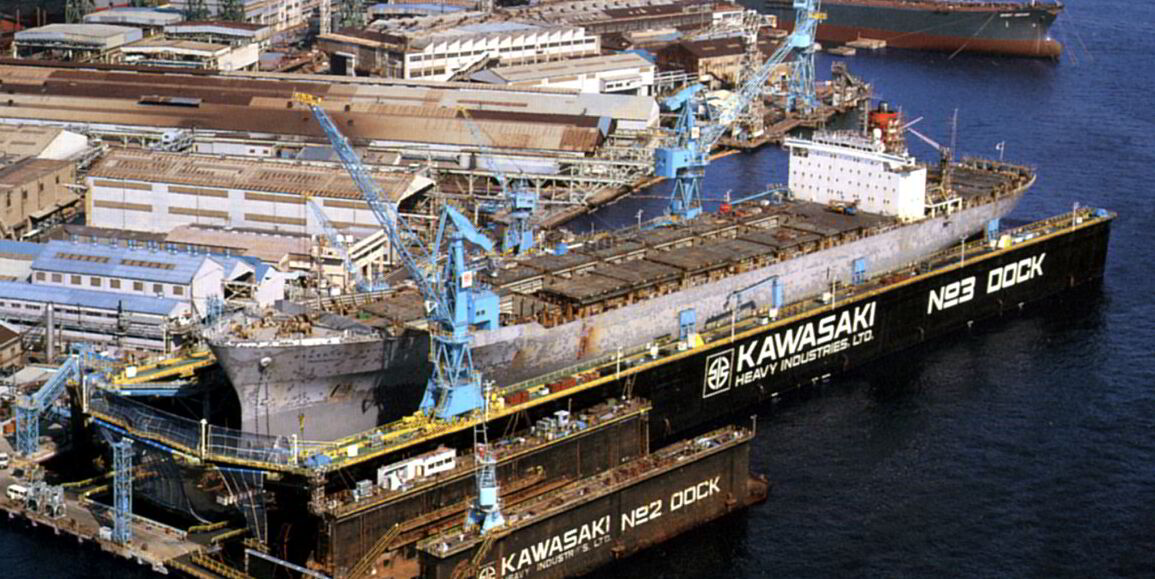Kawasaki Heavy Industries has revealed more details about its engine tampering, putting part of the blame on corporate culture.
The Japanese engine maker and shipbuilder admitted earlier this year that it had found evidence of tampering during engine performance tests before delivery to shipyards.
In a statement in English, it said reporting or acknowledging incidents had been discouraged for many years, even if they were recognised as compliance violations.
It listed an organisational dysfunction regarding compliance and a sense that delivery times and profitability should be prioritised over quality.
A corporate culture that emphasised precedent over making improvements, even when it came to altering test data, was also highlighted.
Kawasaki said a “lack of customer perspective” led to “the justification of falsifying quality records”.
The company is one of a handful of Japanese engine makers that have been found to have meddled with engine tests before delivery to customers.
These factory or shop tests enable class societies and shipowners to see that ordered engines meet commercial and regulatory specifications.
In its latest announcement, Kawasaki confirmed that the results of 673 two-stroke engines had been adjusted.
This included altering fuel consumption test data, fuel consumption rates, exhaust gas temperature readings and intake temperatures to turbochargers.
Most of the engines with tampered data were built under licence for international tonnage.
Kawasaki Heavy Industries said in the statement: “Based on the results of interviews conducted to date, it is believed that the main motive behind the unauthorised alteration of test data was to avoid having to explain discrepancies in fuel consumption and other performance-related issues by keeping engine fuel consumption values within the required range of customer specifications and by reducing the discrepancies in fuel consumption performance and other performance...
“The alteration of test data … began because data obtained during shop trials failed to meet customer specifications.
“Moreover, shop trial reports were compiled and issued by the design department, while the quality assurance department only checked for deficiencies in the reports themselves but did not perform in-depth checks of the shop trial process.”
It said it was still working to determine whether the data manipulation had affected engine compliance with NOx emission regulations.
In an earlier statement, the company said it believed the test data manipulation involved engines destined for vessels with keels laid in 2000. This means the engines delivered would have been subject to increased NOx limits.
Kawasaki noted in its update that when a shipowner orders a series of identical engines for a newbuildings, one of the engines, often the first in the series, is put through NOx emission tests and the results are deemed the same for the rest of the series. These are called the parent engine and member engine.
In response to the revelation about the data manipulation, Kawasaki said it had now established corrective measures.
They include sealing dials to prevent manipulation, removal of software on computers that could alter measurements of fuel consumption rates, and additional security on computers used to measure exhaust gas and turbocharger intake temperatures.
This is not the first time Kawasaki has been caught tampering. In 2022, a subsidiary was found to have been doing something similar.
It said its quality assurance department is now taking a more active role in engine trials, through audits and in ensuring its corrective actions are implemented.
Kawasaki Heavy Industries and its competitors in Japan and other shipbuilding countries build engines under licence, including those of MAN ES, the industry’s largest engine design supplier.
MAN ES has a network of 29 licensee engine makers in China, South Korea, India, the US and Spain, as well as Japan.
In an interview with TradeWinds’ Green Seas podcast, Bjarne Foldager, MAN head of two-stroke, said it was not normal for his company to be present for factory tests before an engine is certified and sent to the shipyard, but compliance and performance certification would come from a classification society.
“We are available to assist the licensees, but the responsibility of shop tests is the licensee,” he said. “Typically they have a class society that is part of the contract with the shipyard for that particular ship that will be signing and issuing the documents.
“We are part of the apparent engine tests — for a first-of-series engine — and the R&D tests of a brand new engine design, but most of the time the licensees can handle this without our assistance, but we are available if they need help with the assembly process, particularly with a new engine, and helping with sub-suppliers, as there are over 2,000 components.”



